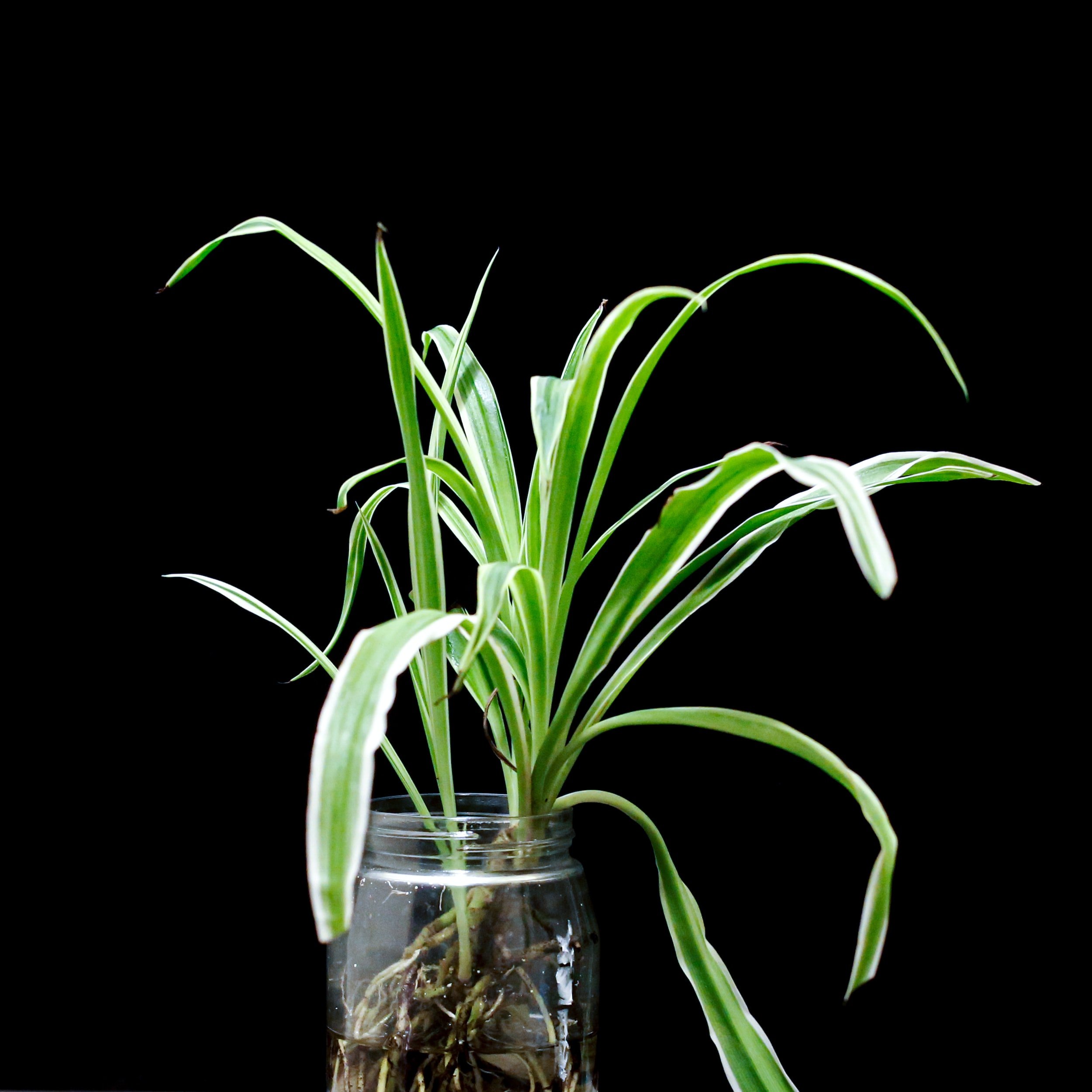Plant Profile
Spider Plant
a.k.a. Spider Ivy // Airplane Plant // St.Bernard’s Lily
Native to South Africa, and with over 200 species, the Spider Plant is one of the most adaptable and easy to care for indoor houseplants. Mature plants will grow small white flowers from long stems of the mother plant, which will develop into clusters of hanging ‘spiderettes’ or ‘pups.’ Fast growing and with its striking arched leaves and incredible air purifying qualities, Spider Plants are a great addition to any living space.
Top Tips
✔ Remove yellowed or dying leaves to encourage better growth and keep your plant looking attractive.
✔ Aerate the soil once a week so the roots don’t suffocate - you can do this by using a chopstick to loosen the soil around the base.
Plant Care
-
Your Spider Plant will thrive in bright to moderate indirect light, but is tolerant of lower light spots too - although you may just see less /slower growth. Too much direct light will scorch its leaves.
-
Spider Plants have their own thick tuberous root systems, designed to survive prolonged periods of drought, so they don’t mind their soil drying out a little in between waterings - you can easily let the top third of the soil dry out before watering again. Use tepid, distilled water if possible, to prevent build up of chemicals like chloride and fluoride in the soil, which can cause browning leaf tips.
-
An occasional mist will keep humidity levels up and encourage healthy growth, or position near other plants to increase humidity.
-
Fertilise once a month in Spring and Summer, and cut back completely in Autumn and Winter.
-
Spider plants are more tolerant than most plants of cooler temperatures and are happy in temperatures ranging between 13C and 27C.
-
Non- toxic.
-
The Spider Plant is a great one to propagate - once the plantlets have developed, place in a small pot of soil while still attached to the mother plant, allow to take root and then cut from the mother. Larger, more mature mother plants can be propagated by division.
-
Repotting is only really necessary once the plant is really rootbound - every other year or so. Use a well draining soil.




Quick plant check up
Browning Leaf tips or edges
This could be for a few reasons, including lack of humidity, too much direct light, build up of chemicals from tap water, and over watering.
Fading colour in leaves
Too much sunlight.





